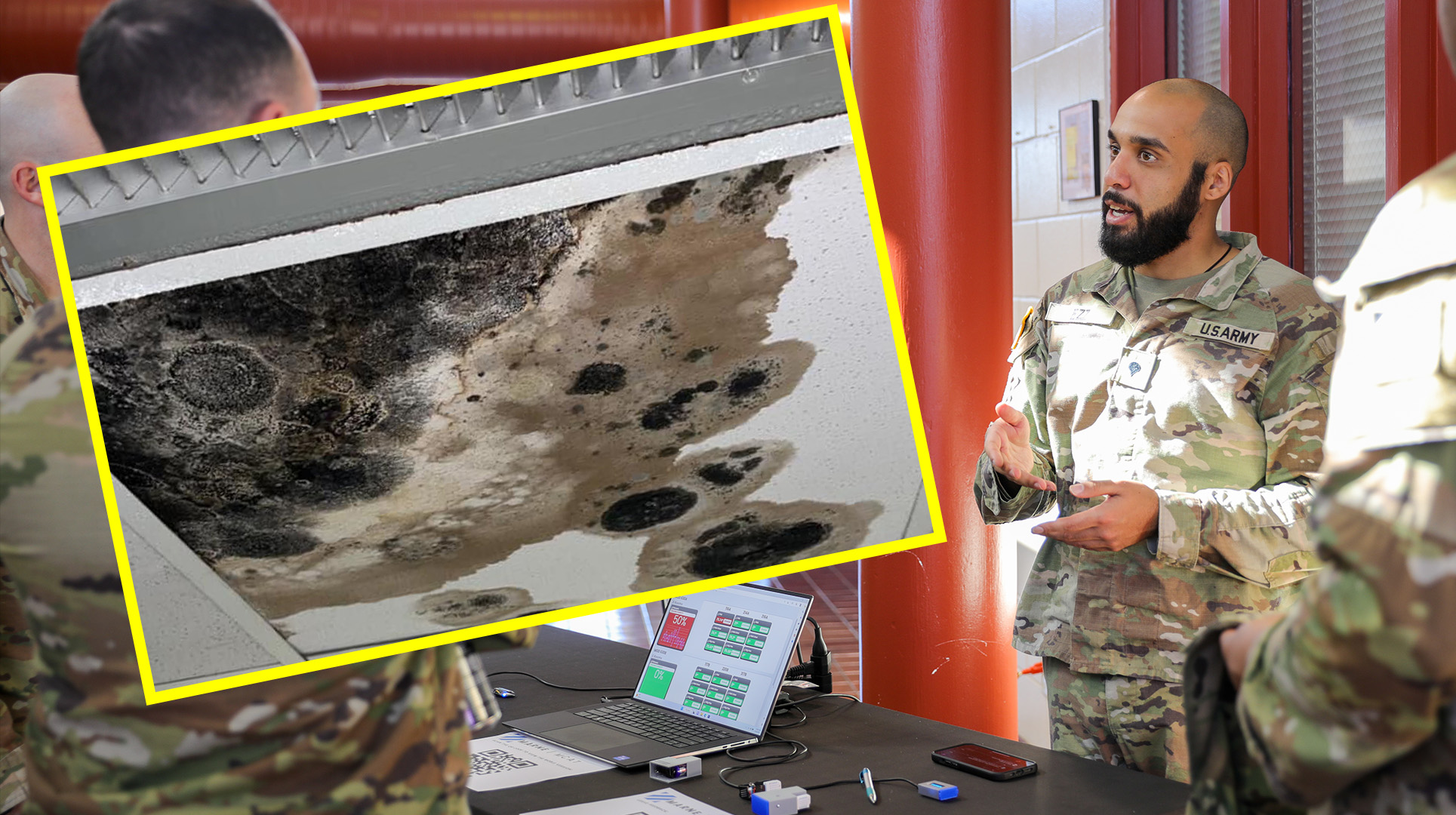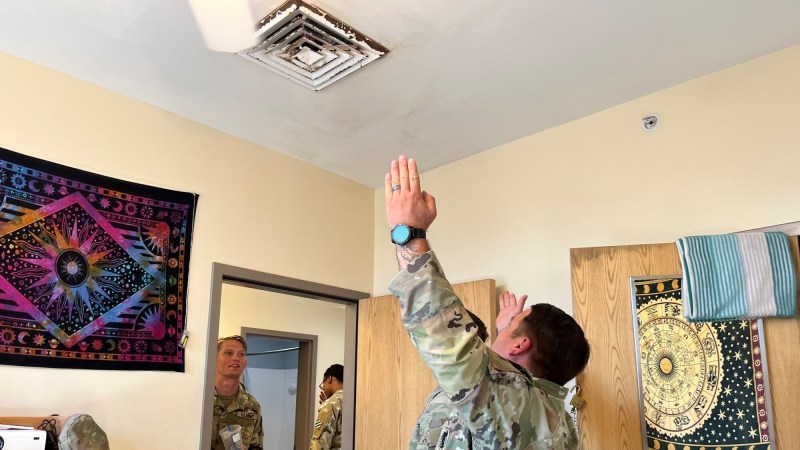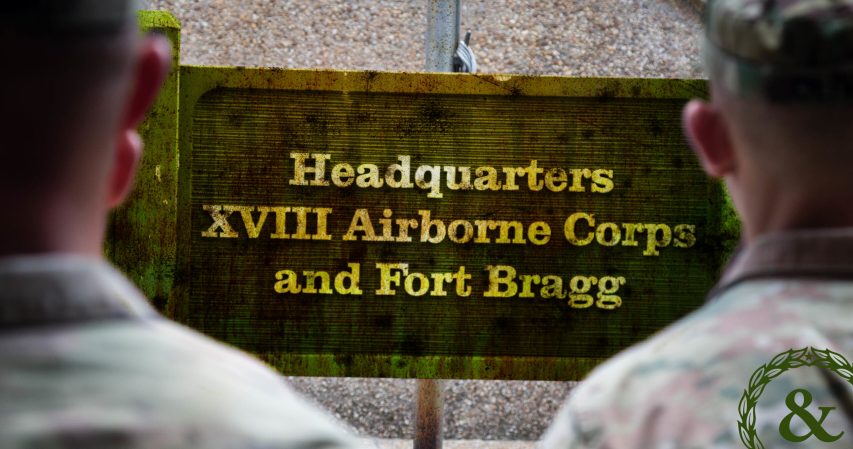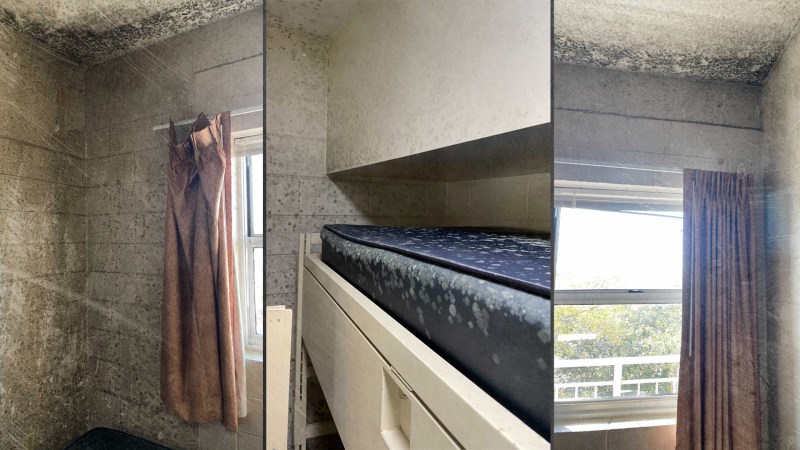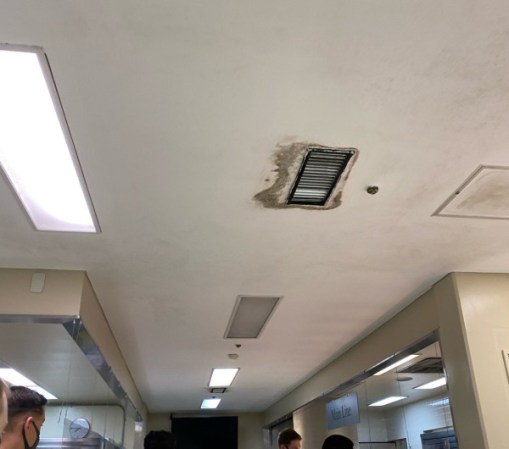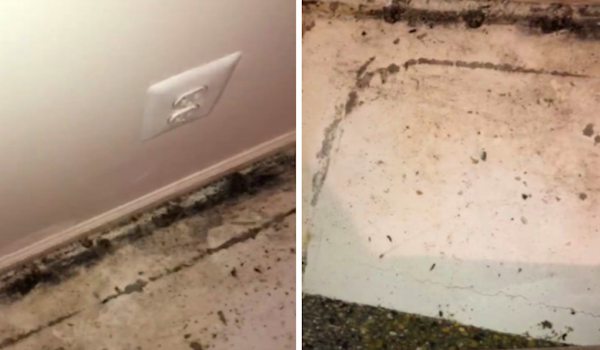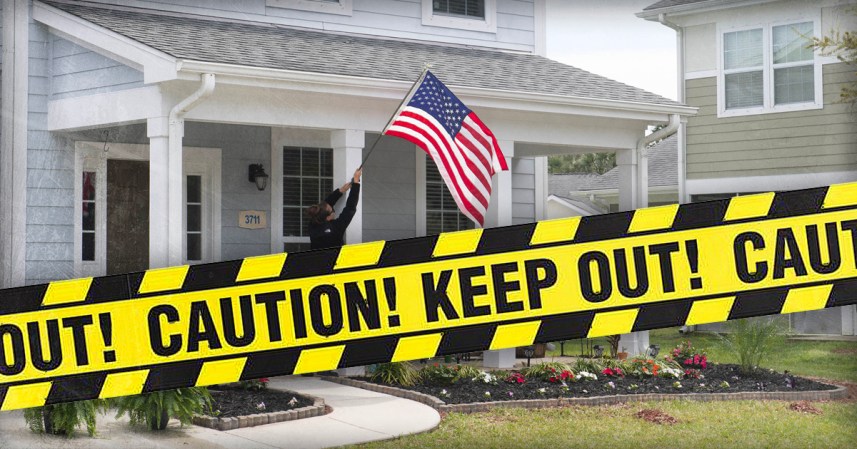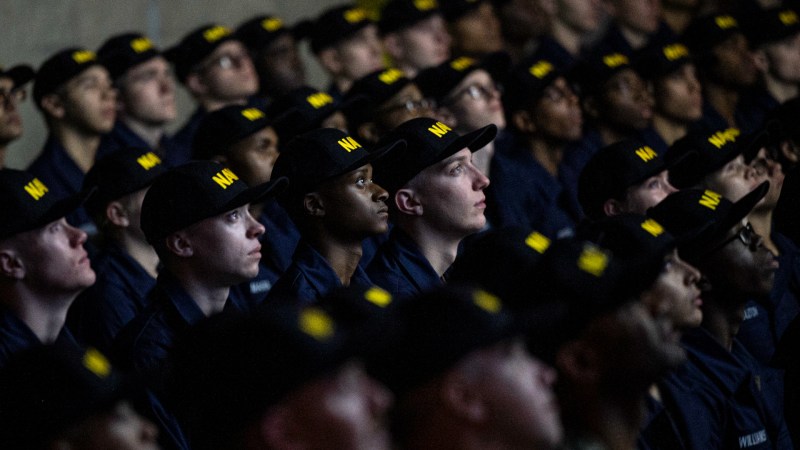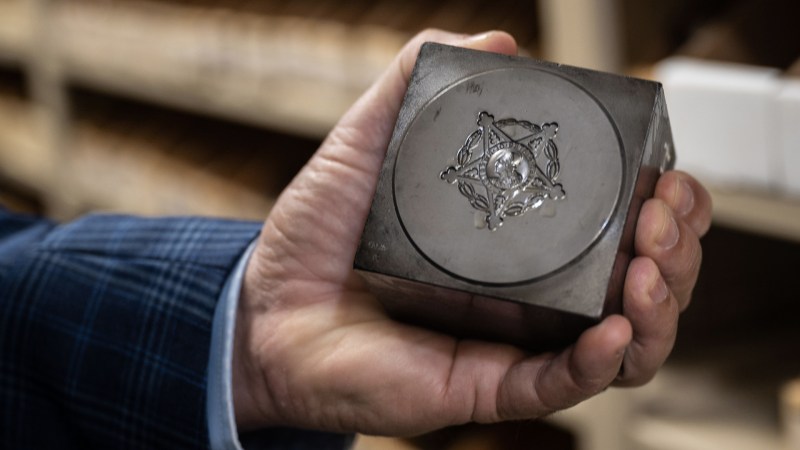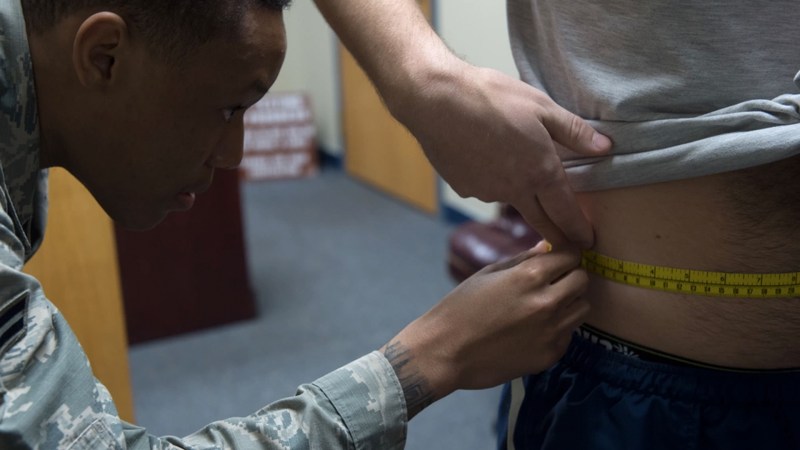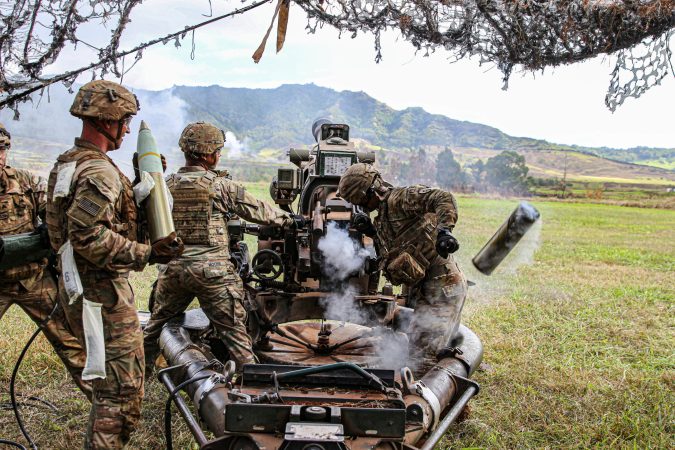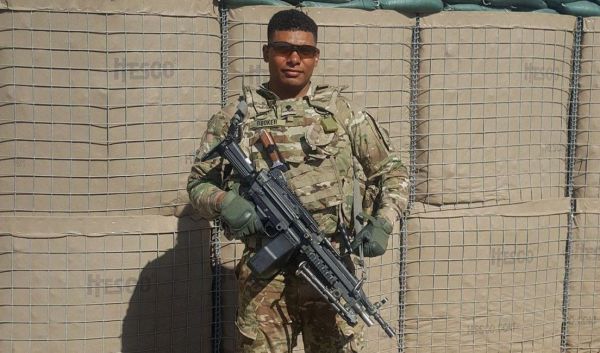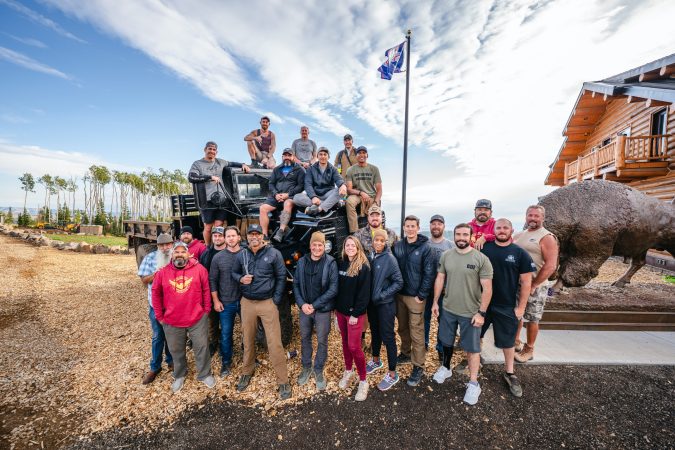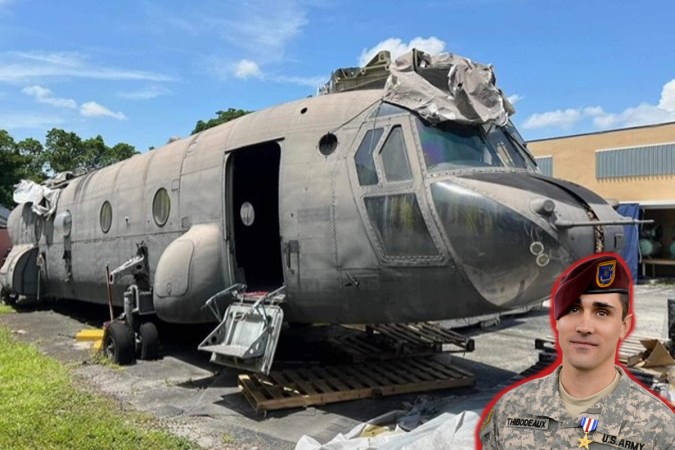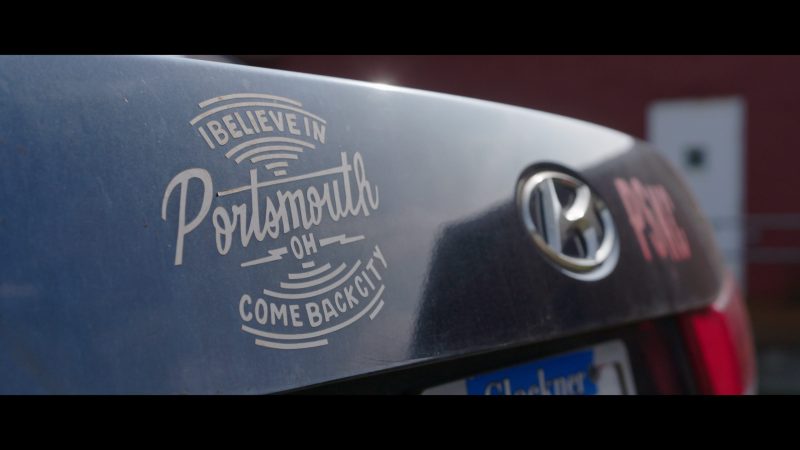Pfc. Salem Ezz had just started working with a new Army innovation lab on Fort Stewart when his fellow soldiers returning from deployments began discovering black mold in their barracks.
Soldiers were posting pictures and videos of the mold that had infiltrated their barracks on social media pages like “Army W.T.F!” and TikTok. “That made it explode,” Ezz said.
Pictures showed barracks’ ceilings and walls taken over by black rings of mold. The fungus lined air vents and spread to troops’ uniforms and furniture.
“It’s below what most people outside the military would consider a standard that they would want their soldiers living in,” Ezz said of the barracks conditions.
The timing seemed perfect. Originally an infantryman, Ezz had switched into a software engineer under the Army’s Borrowed Military Manpower program after working with an innovation hub under the Joint Special Operations Command. He had just taken a similar role at the Marne Innovation and Technology Center, creating new devices and technologies for problems that had slipped between the cracks. Mold in the barracks seemed like a perfect target. With his technical background, Ezz became the engineer behind the Mold Conditions Awareness Tool, or MCAT
“We did not expect to find the greatest threat to our soldiers right now was within their own living areas,” Army 1st Lt. Chris Aliperti, the project’s first manager said at the time.
The tool was recognized in April at the Army’s Shark Tank-like competition called Dragon’s Lair 8 in Tampa Florida.
The MCAT is a 3D-printed device that uses remote sensors to monitor temperature and humidity levels within barracks to identify conditions that lead to mold. Each room connects to an app which keeps track of historical data, temperature and humidity.
If the relative humidity is above 65% and the temperature is above 85 degrees Fahrenheit, that sets the conditions for mold growth, according to the Department of Public Works at Ft. Stewart, said 1st Lt. Patrick Shea, the tool’s current project manager.
When it finds those conditions, the MCAT app triggers an alert to barracks managers, leadership or whoever subscribes to the specific room. Barracks managers will then put in a work order with a technician to solve whatever the issue, be it a broken HVAC system or leaky pipe.
“It’s the government, things get lost in the wayside all the time,” Ezz said. “Now there’s something telling people to remember to make sure things actually happen.”
Ezz’s team has installed the first MCAT system in one of the barracks in Fort Stewart with plans and funding in place for more.

An Army-wide problem
The problem of mold in barracks flared into the news again last week with a Government Accountability Office report that found barracks at 10 installations posed “serious health and safety risks,” with black mold infestations, broken doors and locks and non-military people sleeping in the barracks. In some cases, troops were even left to clean up “biological waste” left by their peers who committed suicide.
“It’s an embarrassment,” Congressman Don Bacon (R-Neb.) told Task & Purpose. “I think installation commanders who are in charge should be held accountable. There should be some accountability here and a sense of urgency.”
Among the Army’s 6,700 barracks, 23% are classified as “poor and failing condition,” according to Carla Coulson, deputy assistant secretary of the Army for installations, housing, and partnerships. Coulson testified to Congress last week that the service needed an extra $6.5 billion to bring those barracks up to a passing grade. Those funds, she said, were needed in addition to money Congress has already appropriated more funds than the Department of Defense even requested.
The Army’s “Permanent Party Barracks Resourcing Strategy” recommends putting more than $4 billion towards barracks maintenance, repair and construction in the next decade to bring junior enlisted officer housing up to standard by 2030, according to reporting by the Military Times.
Uses Beyond Mold
At Fort Stewart, Ezz says the MCAT team hopes that the tool can solve common infrastructure problems that arise in the older buildings that make up much of the base. The 2022 mold outbreak was primarily in the base’s aging barracks, known as Volunteer Army or VOLAR barracks, which were built between 1977 and 1984.
“Starting with a temperature and humidity will help us indicate where weak points are in different building systems and understand what needs to be monitored to prevent bigger failures,” Ezz said.
Ezz is on his final days of active duty but plans to continue working on the tool with the Marne center. As a civilian, he’ll act as a software engineer and help incubate other innovations. He’ll work with the Civil-Military Innovation Institute, a nonprofit that helps troops circumvent some of the Department of Defense’s red tape to develop innovations faster. CMII is part of a Congressional initiative by the Army Research Laboratory called the Catalyst-Pathfinder program.
The MCAT team is now working with the Georgia Tech Research Institute on a printable circuit board design which will help supply the team with 5,500 sensors for better detection and more data collection.
They have received $400,000 from the 3rd infantry division and would like to scale the project up to outfit an entire brigade, or 20 barracks, by the end of 2023. Eventually they want to install sensors in every barracks at Fort Stewart and Hunter Army Airfield.
The Army has set up nine innovation cells, with three each at the 82nd Airborne, 101st Airborne and the 3rd Infantry Division. Two more are expected to be stood up at the 10th Mountain Division and the 25th Infantry Division in Hawaii, Shea said.

